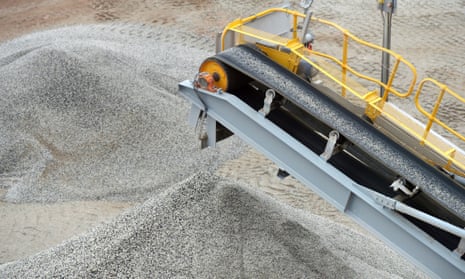Extract from The Guardian

Revenue from mining key metal used in EV batteries to triple by 2027-28 while thermal coal exports set to fall by more than 70%
Fri 7 Apr 2023 01.00 AEST
Last modified on Fri 7 Apr 2023 01.17 AESTNew data released by the Australian government forecasts local lithium production will double and the industry’s revenue will triple by 2027-28 compared with last financial year.
The value of the country’s thermal coal exports – burned in power plants in Asia to generate electricity – is headed in the other direction: expected to slump by more than 70% over the same timeframe as the price returns to pre-Covid levels.
This is in part a reflection on how much fossil fuel prices have soared in recent years as a number of factors – the pandemic, Russia’s invasion of Ukraine and flooding in some production areas – hit global supply. That has now started to come off. The price of thermal coal fell sharply over the first three months of this year, but the total value of thermal coal exports this financial year are still expected to reach $65bn.
By 2027-28 it is expected to be at the same level as lithium – about $19bn. Like fossil fuels, lithium prices rose in the past year as demand outstripped supply. They are expected to reach nearly $19bn this year before falling as more mines start operating, then begin a gradual rise in the years ahead.
The rise of lithium is being significantly driven by the predicted tenfold growth in electric vehicle sales between now and 2030. Australia is the world’s largest lithium exporter. It was responsible for more than half of global production last year.
About 80% of the lithium dug up in Australia is used to make rechargeable batteries and this proportion is expected to reach 90% as EVs become popular. While Australia has been slower to embrace clean cars, global EV sales rose by more than 40% last year, largely due to surging interest in China.
Tony Wood, the energy and climate change program director at the Grattan Institute thinktank, said the forecasts were plausible and Australia was well placed to capitalise on growing demand for lithium and other critical energy minerals, particularly nickel and cobalt.
A Grattan Institute report from last year cited International Energy Agency forecasts that global demand for lithium would grow by up to 41 times by 2040, while the value of nickel and cobalt markets was expected to rise by a factor of 30.
Australia has 27% of the world’s known deposits of lithium, 22% of nickel and 21% of cobalt.
Wood said governments should back a “21st-century industry policy” offering early-stage support to a range of clean opportunities, including using renewable energy to power processing of critical metals in Australia before they were exported.
He said backing these industries could create economic value, help reduce emissions and lead to significant employment, often in areas where they would be needed as fossil fuels were phased out.
“So politically, economically and socially, it’s not bad. As a strategic pivot it makes a lot of sense,” Wood said.
Tim Buckley, the director of Clean Energy Finance, said public support for private investment in renewably powered refining operations should come from the $15bn national reconstruction fund and the Clean Energy Finance Corporation, sometimes described as the government’s “green bank”.
“The massive opportunities emerging for Australia from the accelerating global energy transition are crystal clear,” he said.
Most of Australia’s lithium production is in Western Australia, with mines operating in the state’s north and south of Perth.
The 2022 Grattan Institute report said regulation of new and expanding industries would be important. The ABC reported last year that lithium mines in WA have caused water pollution.
No comments:
Post a Comment